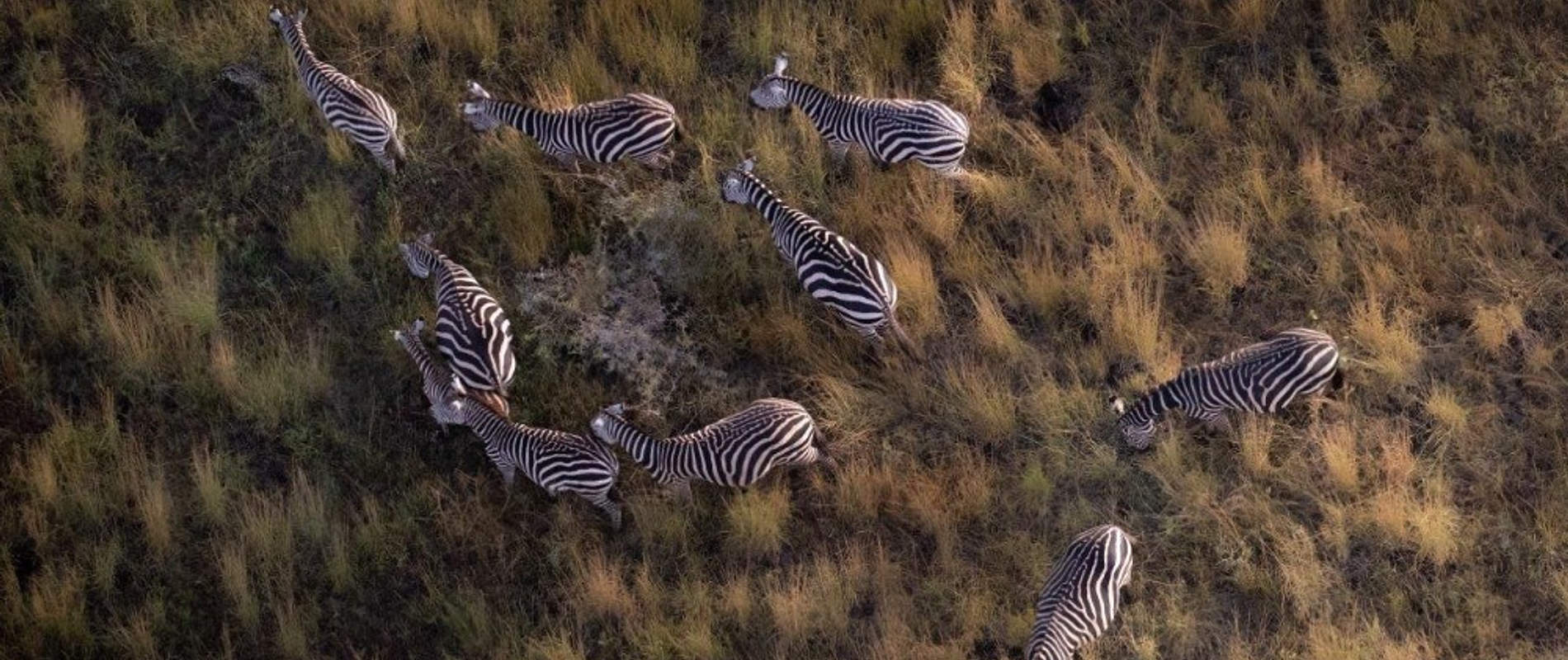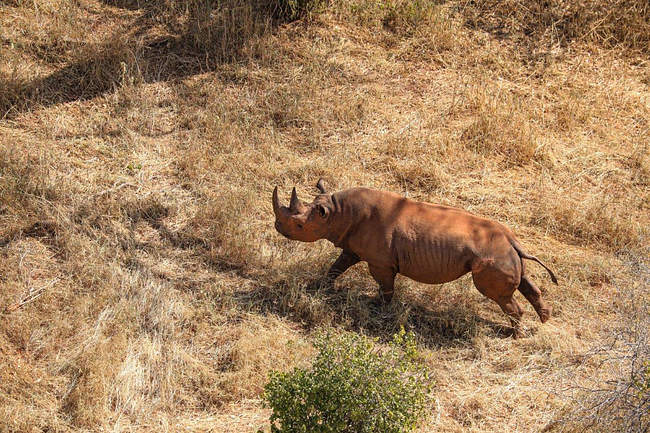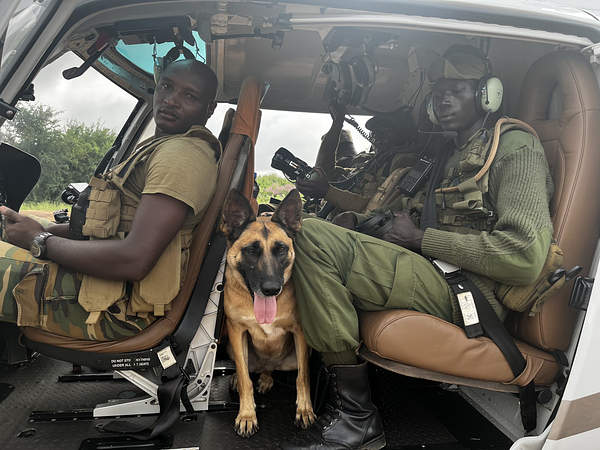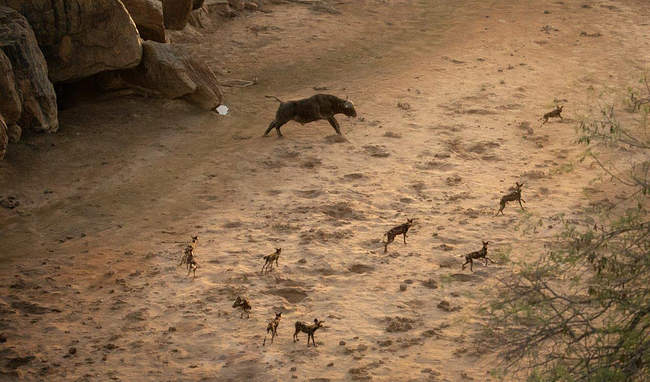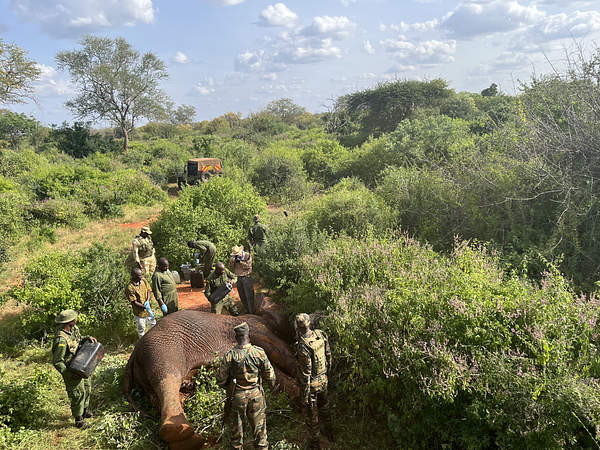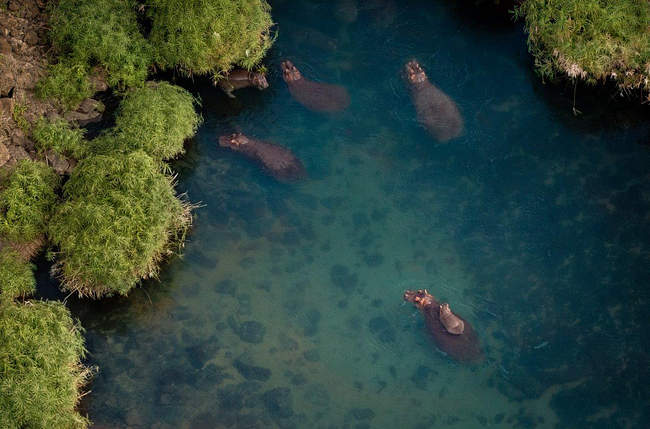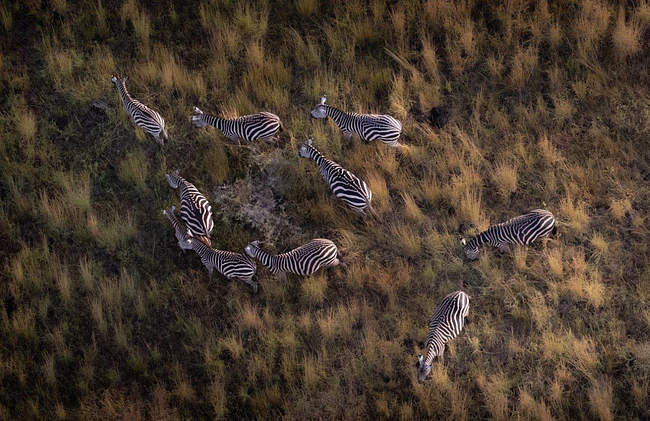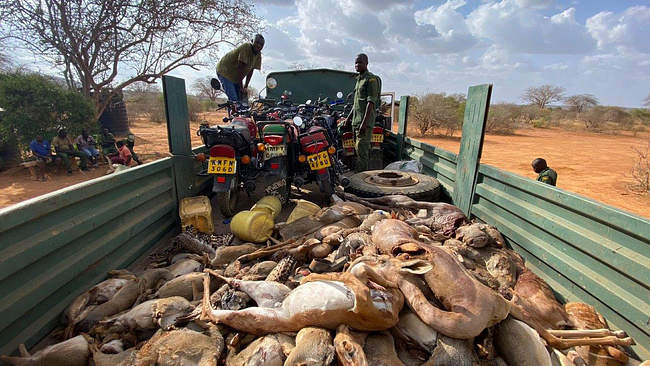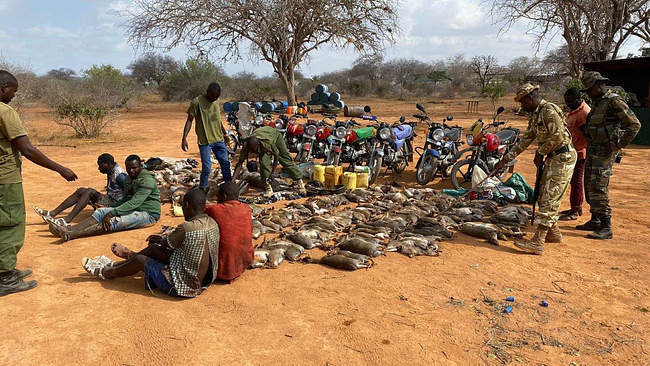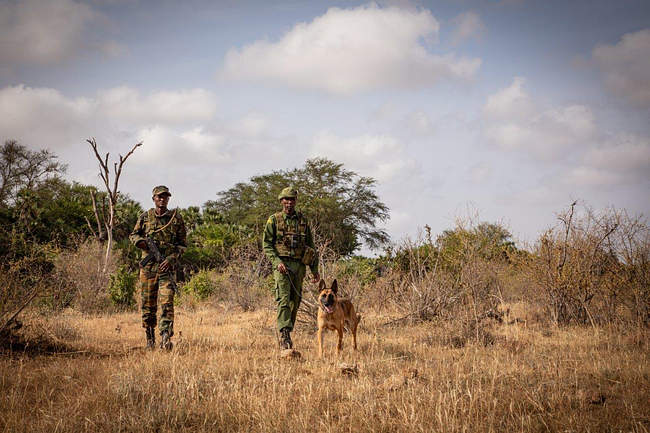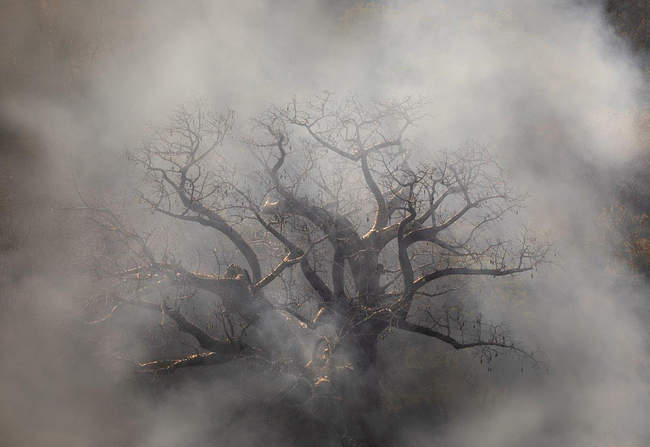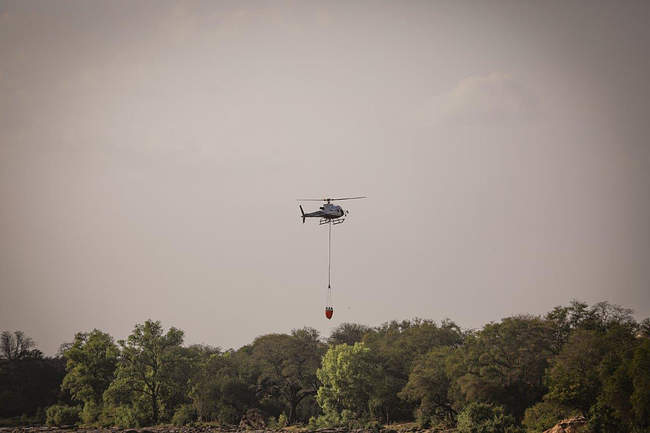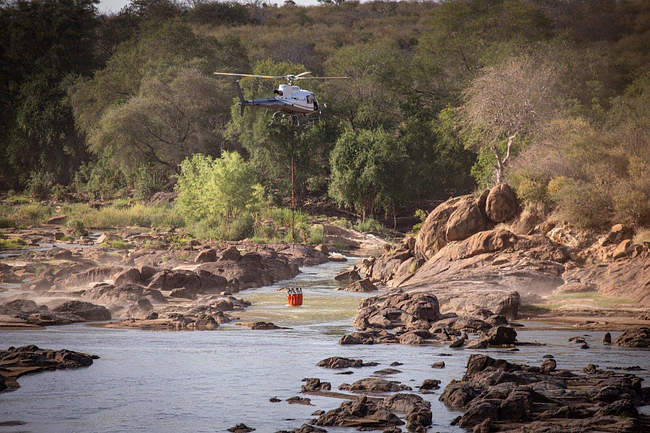February marked an earlier than normal increase in illegal activity within the Tsavo ecosystem. Significant flying time was dedicated to assisting KWS in tackling the illegal livestock incursions.
An indication that bushmeat poaching and human-wildlife conflict is on the rise, was a slight uplift in the number of veterinary cases assisted by the airwing during the month. Although one search for an injured bull elephant with a suspected arrow wound was unsuccessful, the lives of two other bull elephants near Kasigau were saved. Further afield, our team also flew to Mwaluganje Elephant Sanctuary to try and locate a lion that had strayed into the Shimba Hills ecosystem and is posing a threat to the fragile Sable antelope population there. Unfortunately, an exhaustive search was unsuccessful.
Fortunately, no carcasses of poached elephants were found in February, although two older carcasses, presumed natural deaths, were sighted during aerial patrols and the ivory of these individuals was recovered. Similarly, no orphaned elephants were rescued in Tsavo during the month, however, our helicopter pilot was called to airlift an orphaned elephant to our Nairobi HQ from Dol Dol in the north of Kenya. There has been a rise in the number of orphans in this part of the country, their mothers likely the victims of human-elephant conflict (HEC).
HEC is a persistent issue outside and our helicopter was called out on 5 occasions to push elephants back into protected National Parks. One of these attempts was unsuccessful, however, another elephant that was pushed on two occasions by the helicopter, was later coaxed with water through a nearby gate back into the Kibwezi Forest.

While not often encountered, two cases of illegal fishing were interrupted by helicopter patrols. Charcoal activity was not observed within Tsavo East and West National Parks, however there was a dramatic increase in charcoal activity on the abutting Galana Ranch, which borders Tsavo east on its eastern boundary. Charcoal camps on Galana Ranch are also responsible for an increase in bushmeat poaching. In one 24 hour period eight motor bikes were confiscated in three different operations, whilst four people were arrested with 142 dik-dik carcasses, 2 kudu, 3 gerenuk, 1 warthog, 2 hares, and 3 bustards. The poachers were all from the Giriama tribe who were using the lamping method: poachers use high powered torches at night, to dazzle and disorientate animals, during which time they rush to the animal and kill it!
Although out of season, the team did respond to the first fire of the year near Ithumba. Thought to have been caused by a honey harvester, creating small fires to smoke bees out of hives, the fire burned for two days. Aerial and ground teams were active throughout to mitigate the spread and they limited the fire damage to an area of 350 acres before it was fully extinguished.
On a positive note there was a notable increase in sighting of painted hunting dogs (wild dogs), with up to 22 seen in one pack. Recently our pilots have also been encouraged by the return of large herds of plains game along the Galana River, with up to 3 herds of over 100 oryx being seen on a particular flight down the river and many hundreds of zebra.

